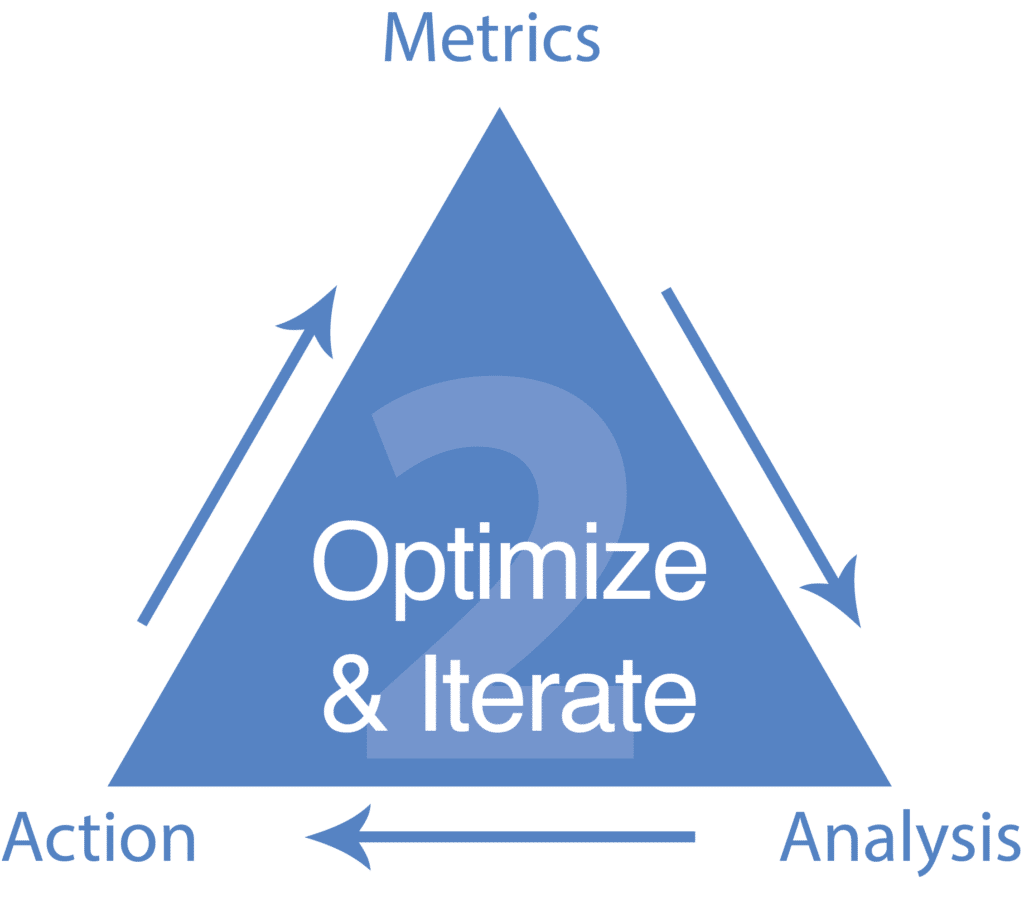I have convinced people at Red Bull to spend money on social media ads and also convinced Nike to run ads against the players instead of against the central brand. I was using the data’s reasoning by actually spending time analyzing the data, not printing charts, and not using more tools.
I did almost all of this with no tools, except the most important tool, which is the one between your ears that’s MAA.
I am curious to see what you will think about the influence.
What Is MAA? ( Metrics, Analysis & Action)
It’s a three-phase way to solve problems or convince people, but you’re using logic so that they have to agree that this is the right thing to do.
- Metrics: Here’s what the figures are.
- Analysis: We diagnose the situation to be, and then
- Action: This is what we need to do.
How MAA Works?
Let me give you an example.
Metrics
When I worked at American Airlines, we had an issue where many people came to the website. Back then, people weren’t sure they were getting the best price. And every time someone checked the price, it cost us a penny because of all the servers and other things involved.

Analysis
So we started tracking these huge expenses. The cost of people coming to the website and just checking flights was a million dollars a month. However, with all these people visiting our website, we initially thought that we were successful.
So if you give them 10,000 miles and another thousand miles, that is not enough. But if you give them 5,000, that’s a quarter of the way towards another ticket. They would earn enough for another ticket if they did it four times.
or
We just needed to offer a first-time booking bonus. I printed out the charts and showed how this graph was so everyone could see it. I called a meeting and said, “Everybody, let’s talk about the right incentive we should offer.”
First off, I didn’t say let’s cover what my idea is. What about Mike’s idea? What about Braden’s idea?
Then I showed them the data and went through metrics, analysis, and action. I went through each of these cases. And the analysis is because people who book the first time will continue to buy.
Action
We need to get people into the thing once and give them some incentive. And the incentive economically has to make sense. So $35 to get someone to book. The first time is not bad because we’re paying $50 as our travel agency commission. So we’re still saving money. And if they continue to buy through us, we’re paying no commission because every time they book through the travel agent, they have to pay that commission.
We have to pay the commission to the travel agency every single time. And then I made a little guesstimate. I said, of all the people coming in, maybe 200,000, 300,000 people a day to the website, and they’re just doing fair quotes, and it’s costing us money. So we’re saving money versus the other channels.
There’s someone from reservations who runs the call center, they were in the room, and they said, “But we could just run them through reservations cuz people can just call the phone number.”
And I said, “But there are many people that don’t wanna call the phone number because of the internet, or for various reasons, they just rather just do it on the internet.”
You Need Data
I came up with that idea, and the other airlines copied it. That’s an application of using MAA. It doesn’t require you to put together this whole analysis; whatever it is, you can always use MAA in this lightweight way to analyze.
People have to take your recommendations if they’re logical. The recommendation is logically chained to the analysis, which is again tied to the data.

In the last 25 years, I’ve learned that whoever has the closest control of the data owns the whole decision-making process.
Because from the data, we have the analysis, and no one can challenge our analysis because we have the best access to the data. They’d have to challenge us on the data. Whoever has the data can do the analysis. Whoever has the analysis can make recommendations. So I have done this a hundred times inside the largest of companies.
What is Decision Making
If you think of decision-making, you’re stuck in the middle of a dark room and don’t know where to go. Data is like shining a light on your surroundings. And if you can control that, people are going to go where the light is shining.
If you believe in this idea of MAA, which is this logical way of solving problems, you should own that data. People never really think of that as an important issue.
How to Cope Up with Hippos in Your Organization
You’re not trying to fight the hippo because the hippo’s bigger than you, and they’ll squash you. You’re like a deer, and they’re the hippo. You put in place this framework of MAA.
Showing Reports: Start with reporting. So reporting shows the number of impressions we had – this is the number of clicks and phone calls. That’s the first step of MAA because it’s just metrics, any report.
So you feed all the hippos those metrics because the hippos, who are the big bosses, don’t want to be in the little weeds and details. They want to know the numbers, so they can provide their opinion, which is great.
- Listen To Their Opinion
You’ll then listen to their opinion. It doesn’t mean you’ll act upon the recommendation, but you’ll acknowledge it. You’ll understand it. You know how, there’s a way where you can reflect an understanding, active listening, reflect that you understand what they’re saying without necessarily agreeing or saying that, okay, we’re going to do that. You acknowledge an understanding of what this thing is and that you will analyze it.
- Put the Frame Work
They carry more authority, but when you put in place this logical frame, people respect you because if it’s your territory, you will win. If it’s their territory to go out for martinis and who knows who and how many years you’d be like, you will lose that game.
You play the game on your field, where you win.
I have been preaching this framework to agencies, corporate officials, and young adults yielding amazing results. This framework is part 9-Triangles.
